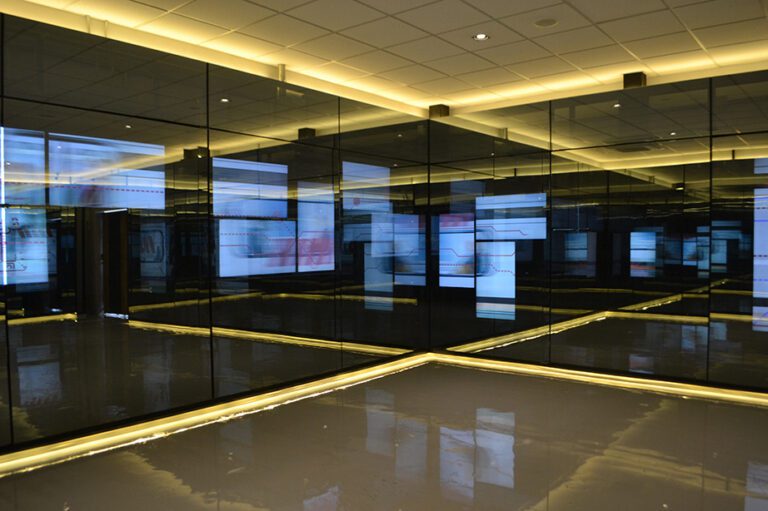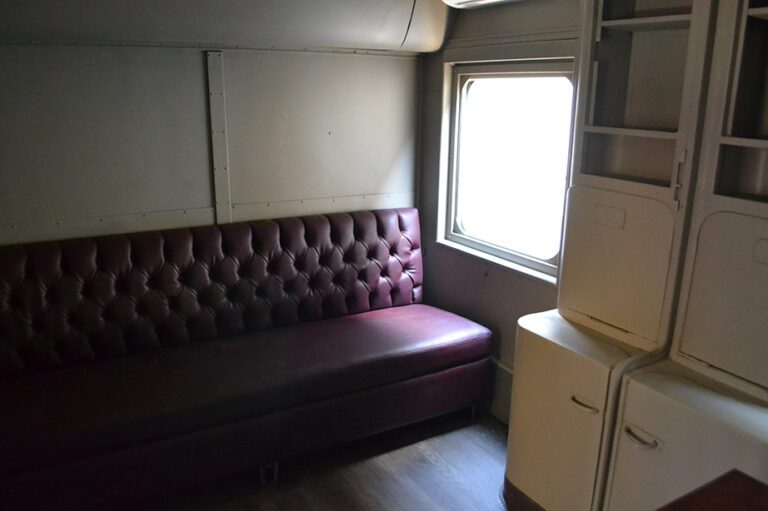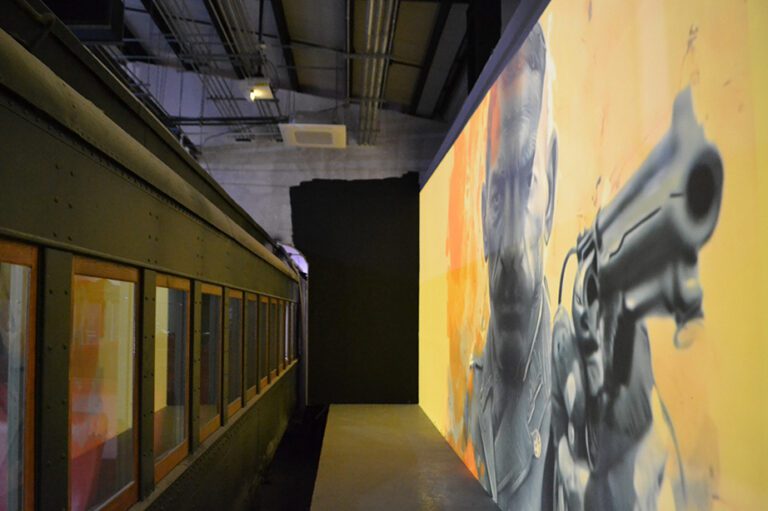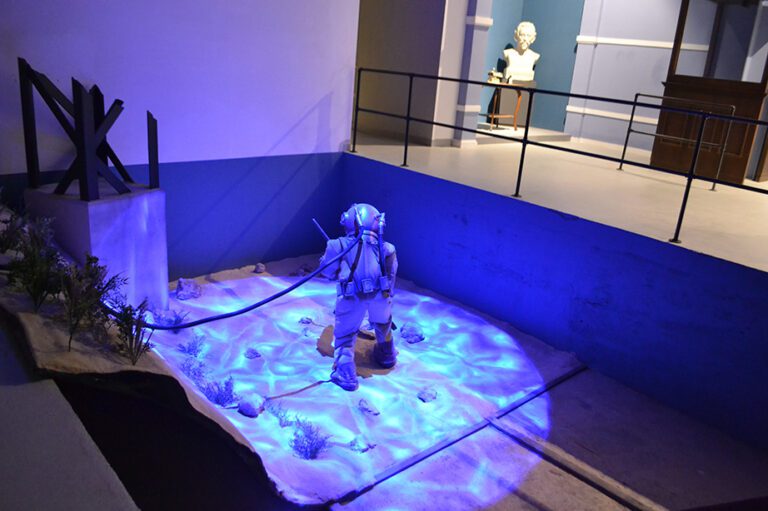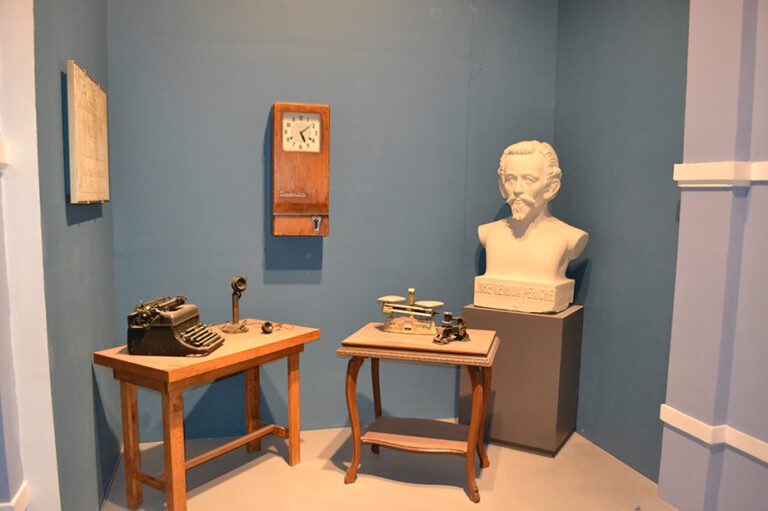- The museum preserves the history of the railway world
- It seeks to open new spaces for cultural expressions
With the spirit of preserving and disseminating the railway legacy and the goal of becoming a new cultural reference space in the Yucatan Peninsula, the Museum of Railways opened its doors today.
This historical museum project has been designed to offer sensory experiences to visitors, thanks to the technologies implemented in each space.
The museum, located in the former warehouse of the Old Central Train Station in Mérida, Yucatan, was restored and adapted to house five permanent exhibit halls, a Temporary Exhibition Hall, and various amenities.
Due to its historical nature, the Railway Museum safeguards locomotives, wagons, and passenger cars that narrate the evolution of the railway, from its creation in the 19th century to its arrival in Mexico, its establishment in the Yucatecan Peninsula, and the current modernity with the Tren Maya.
Each of its exhibition spaces, designed and executed by museography researchers, invites visitors to interact with some of its pieces and vividly experience a journey in a real wagon.


A railway tunnel marks the start of the journey through this museum. In Hall 1, “Del vapor a los trenes modernos” (From Steam to Modern Trains), visitors will learn about the historical, socioeconomic background and technological advancements of trains, through an experience where video screens and scale reproductions of the steam engine’s evolution play an important role.
In Hall 2, “México se sube al tren” (Mexico Boards the Train), visitors will discover the early stages of this mode of transportation and its role during the Mexican Revolution. Additionally, it recalls the heroic participation of Squadron 201, whose members traveled by train before meeting their fate during World War II.
Hall 3, titled “La consolidación de las vías férreas yucatecas y la Estación Central” (The Consolidation of Yucatecan Railways and the Central Station), is an immersive space where the public can learn through cutting-edge video mapping about the legend of henequen from the perspective of the Mayan world.
“Una red de redes” (A Network of Networks) is the name of Hall 4, which consists of two parts: one is an area set up like the Central Station of Mérida, where visitors will learn about its importance to the peninsula and listen to audios from the National Sound Library in a period-themed booth. The other part offers a multisensory journey aboard the Mary Lee, a second-class passenger car from the early 20th century transformed into a 4D simulator. When boarding, the public will experience a train journey while watching projections and listening to incredible stories.
Finally, in Hall 5, “Los ferrocarriles de hoy” (Today’s Railways), visitors can reflect on the railway’s trajectory and significance. This hall provides a point of departure to envision where this mode of transportation is headed in Mexico and its great relevance today.
The Temporary Exhibition Hall deserves a special mention, as its goal is to become a new space for regional, national, and international artistic expressions that seek to explore culture in its many forms.
Another notable area is the souvenir shop, where visitors can purchase a keepsake from their visit.
The café wagons, rest area, and restaurant are spaces that the Museum of Railways has designed to offer the general public moments of relaxation, entertainment, work—in other words, places for rest and fun.
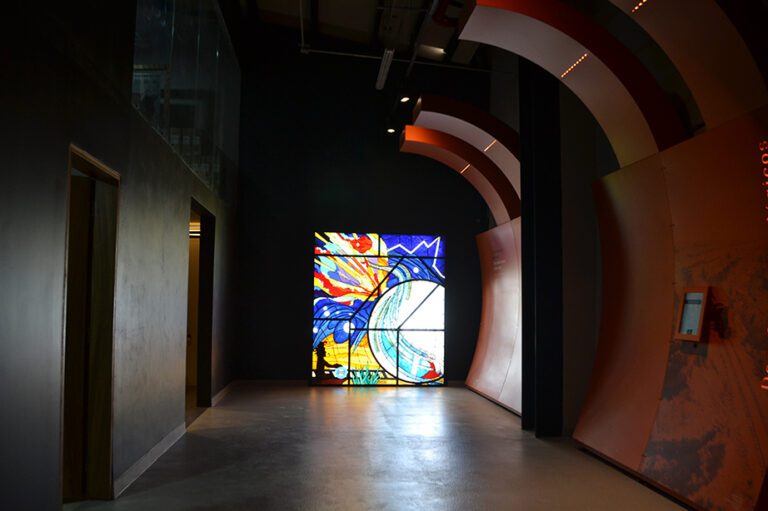



Stained Glass Art: A Significant Bet
One of the project’s major highlights is two works of art created in 2024 by master artist Miguel Ángel Flores, specifically for this new cultural space located in La Plancha Park.
The first piece, titled “De la creación” (Of the Creation), was crafted using traditional leaded stained glass techniques, classical grisaille, fire enamels, and beveled details. It crowns the Temporary Exhibition Hall. The second piece, titled “Movimiento continuo” (Continuous Movement), executed with traditional leaded stained glass techniques, classical grisaille, fire enamels, fusion, and beveled details, is located in Hall 1.
The first work is inspired by the cosmovision of the Popol Vuh, the sacred book of the Mayans. It depicts the creation of man and woman, intricately linked to corn, from which they are born, and the convergence of cosmic energies that give life to a new race. Meanwhile, the second work brings together elements such as Mayan culture and the cosmos, condensed into a representation of the past, present, and future, symbolized by the Train.
In a stunning retrospective exhibit by Yucatecan sculptor Marcela Díaz, you can explore her innovative use of natural fibers, especially henequen. Marcela’s work bridges history, nature, and human connection.
Celebrating Twenty Years Exhibiting: The Sculptures of Marcela Diaz
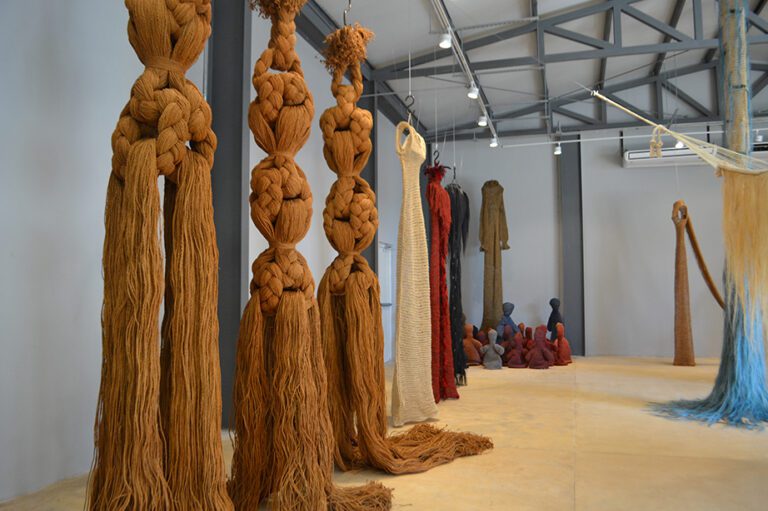

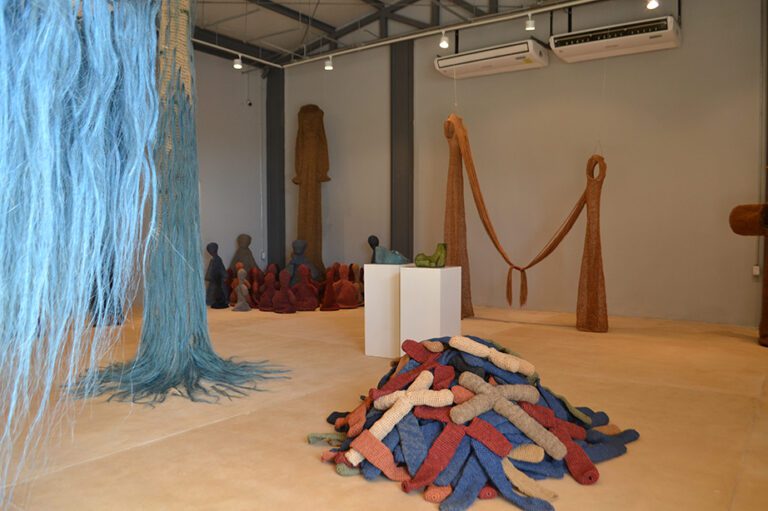

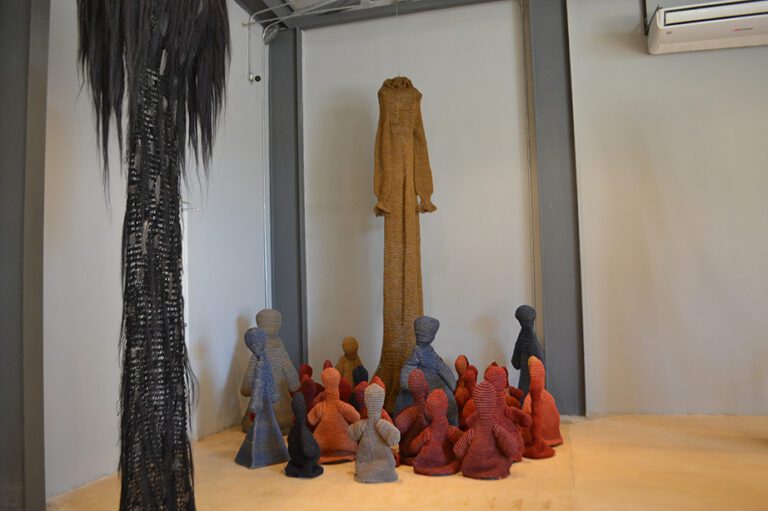

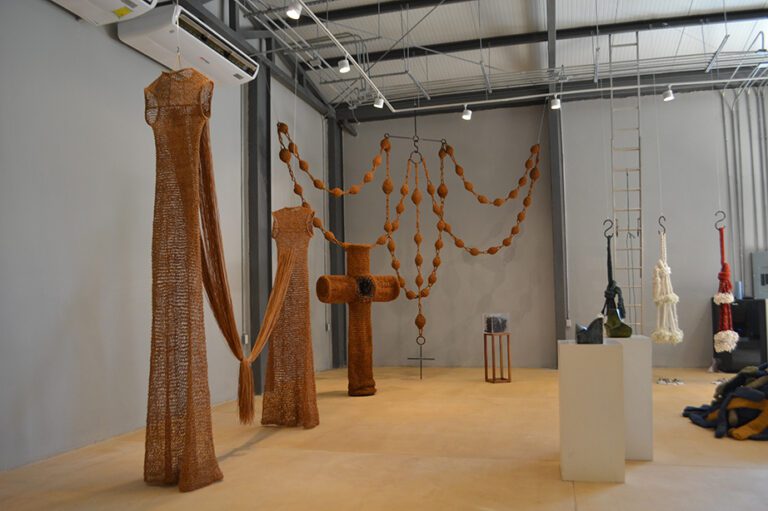

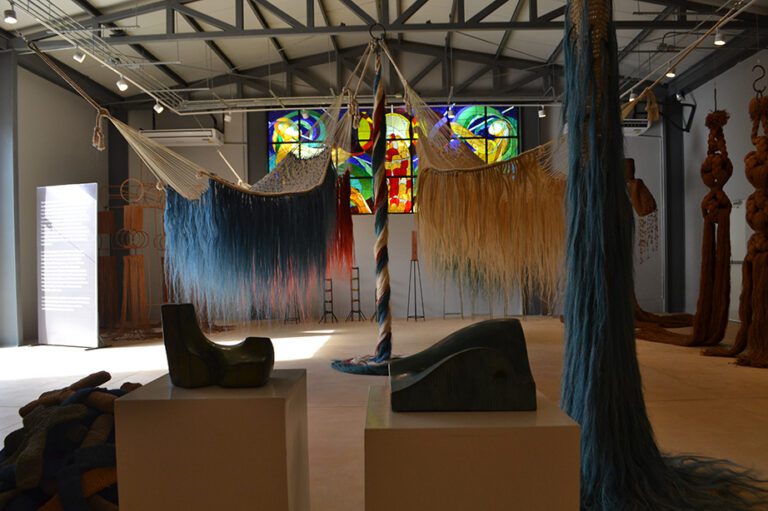



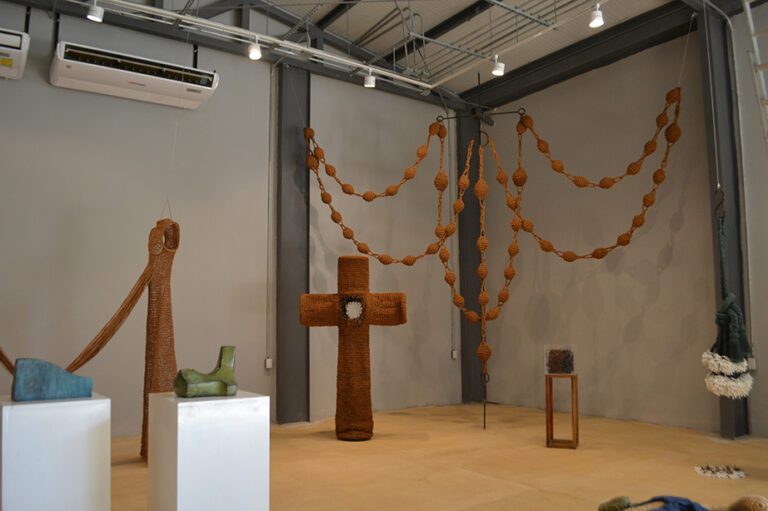

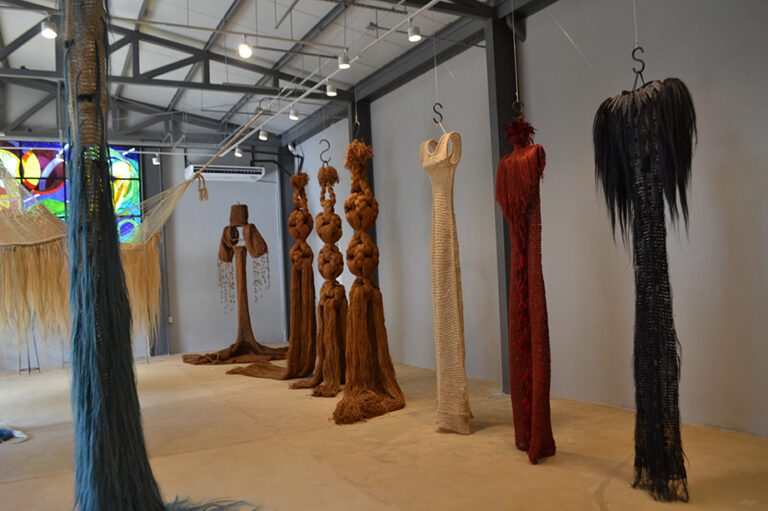

Born in Mérida in 1961, Marcela began her artistic journey later in life, studying under the guidance of Austrian sculptor Gerda Gruber. Over the past two decades, her sculptures have been featured in prestigious galleries and museums in Mexico, Europe, and the U.S.
This exhibit showcases her incredible evolution as an artist, inviting visitors to explore the relationship between material, culture, and artistic expression. Marcela is one of Yucatán’s leading contemporary voices.
⏰ Open Tuesday to Sunday, 10 AM to 6 PM
In conclusion, the Museum of Railways aims, according to its directors, to forge connections and build bridges with various communities, including local residents, compatriots, neighbors, and tourists, to establish itself as a dynamic museum space. It is a place where history, technology, and art coexist—a new station on the route of trains in the country, the Station of Culture.


